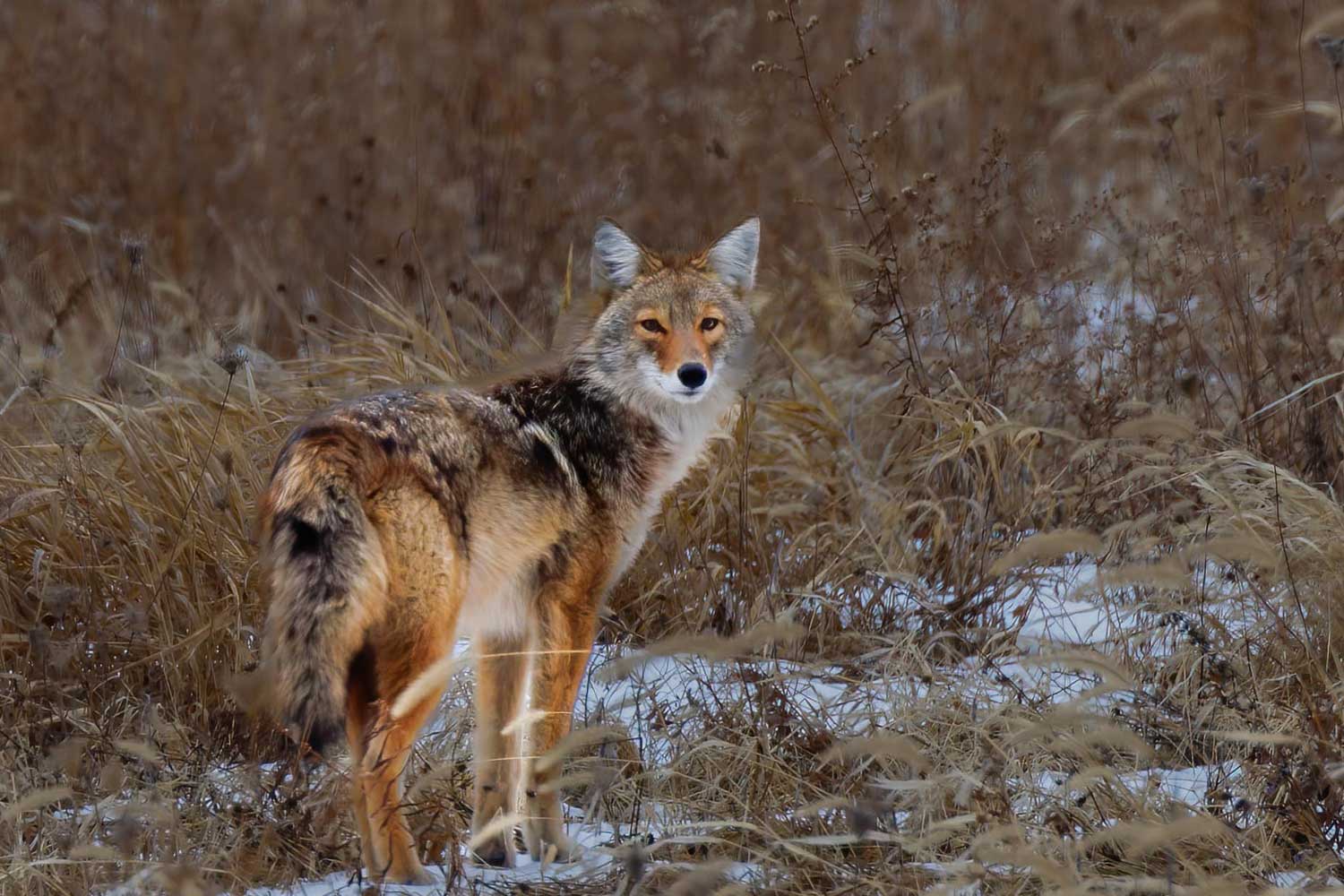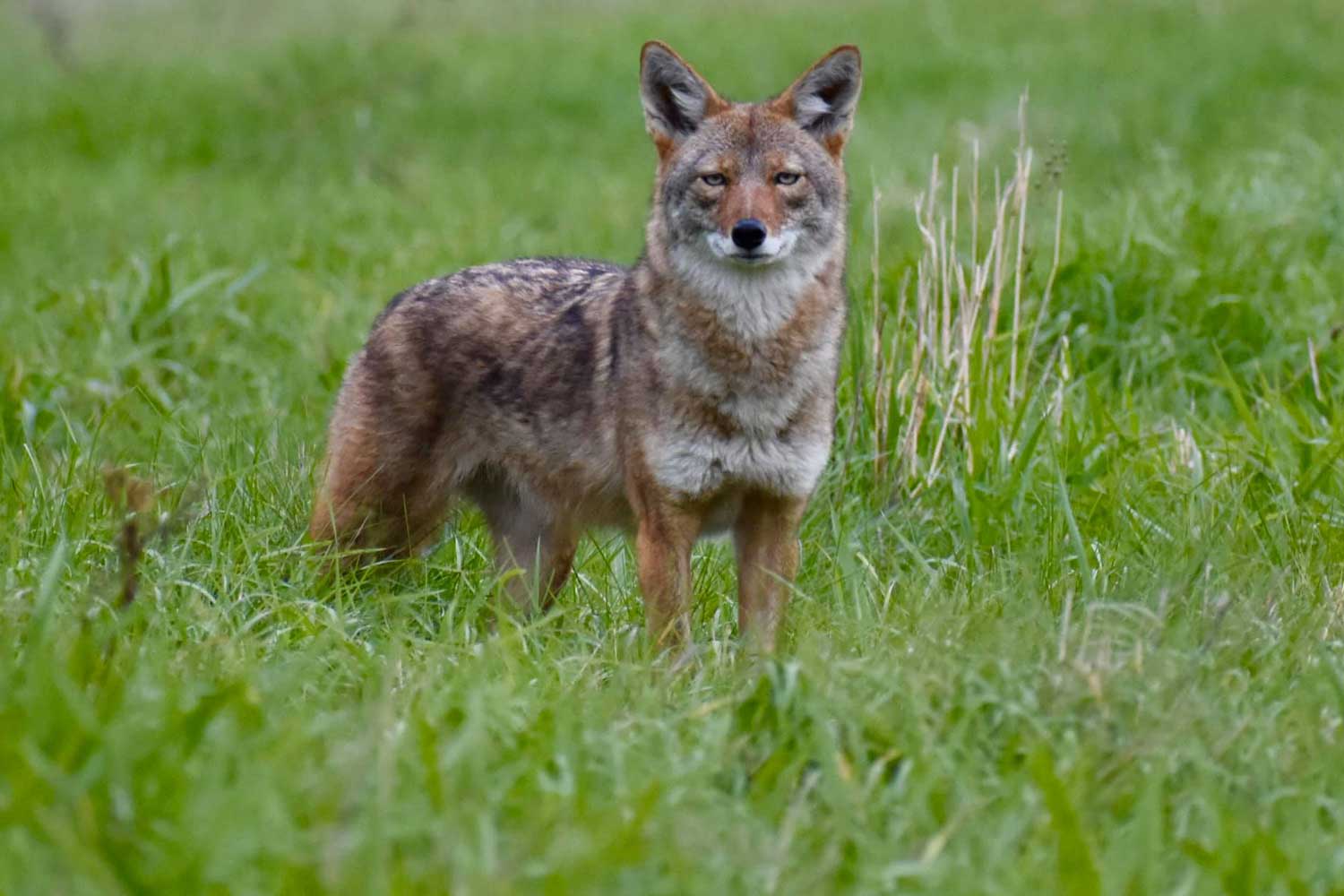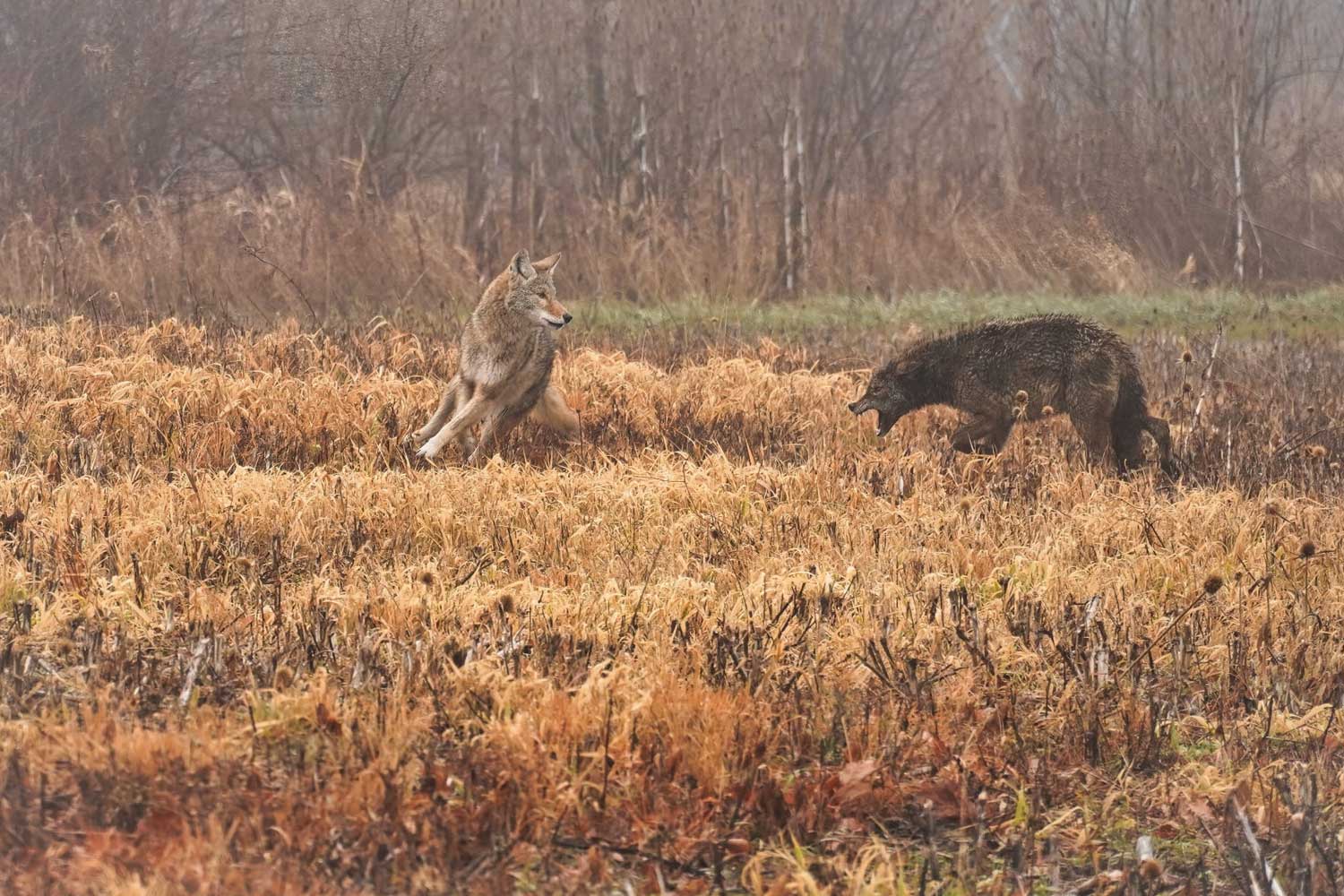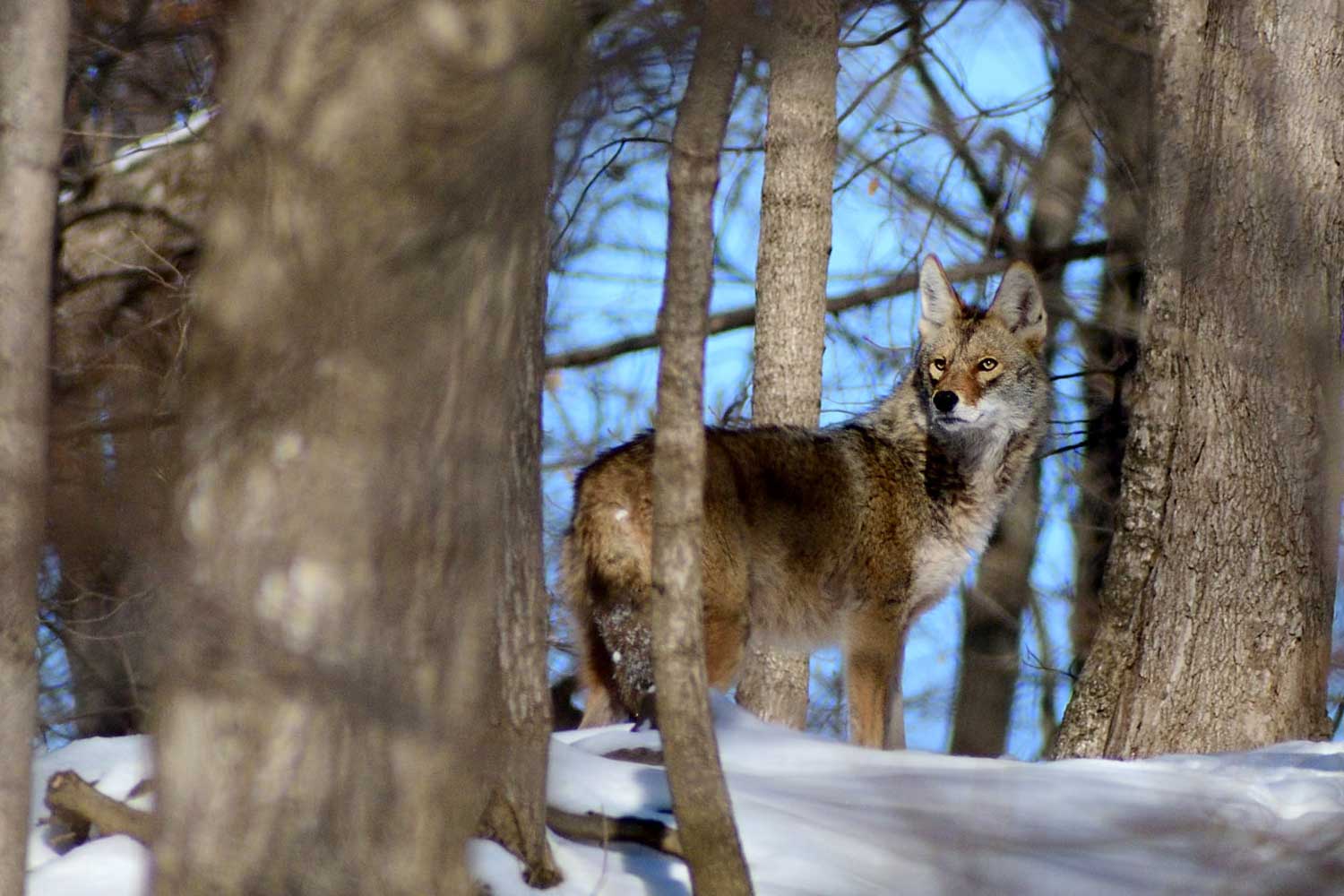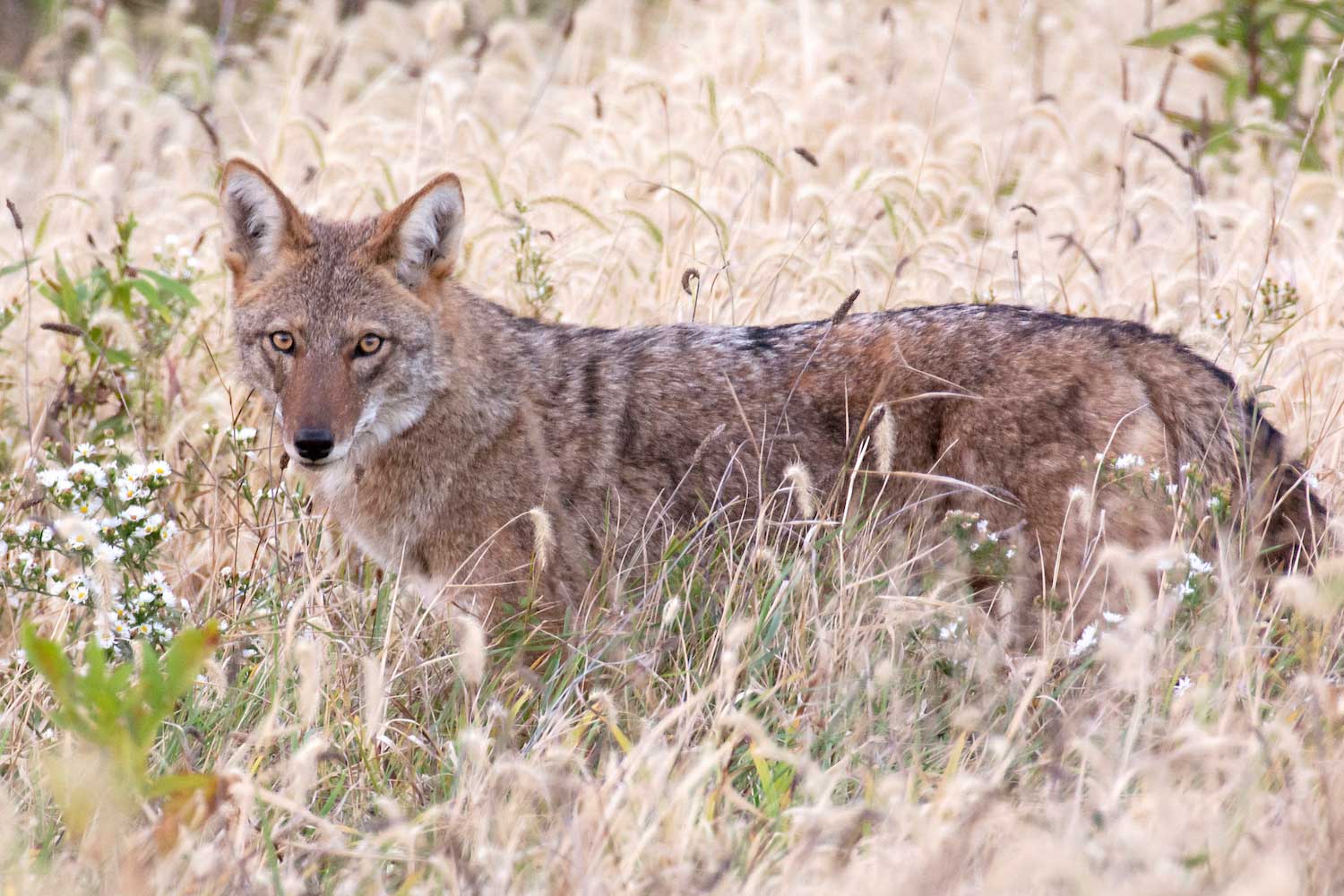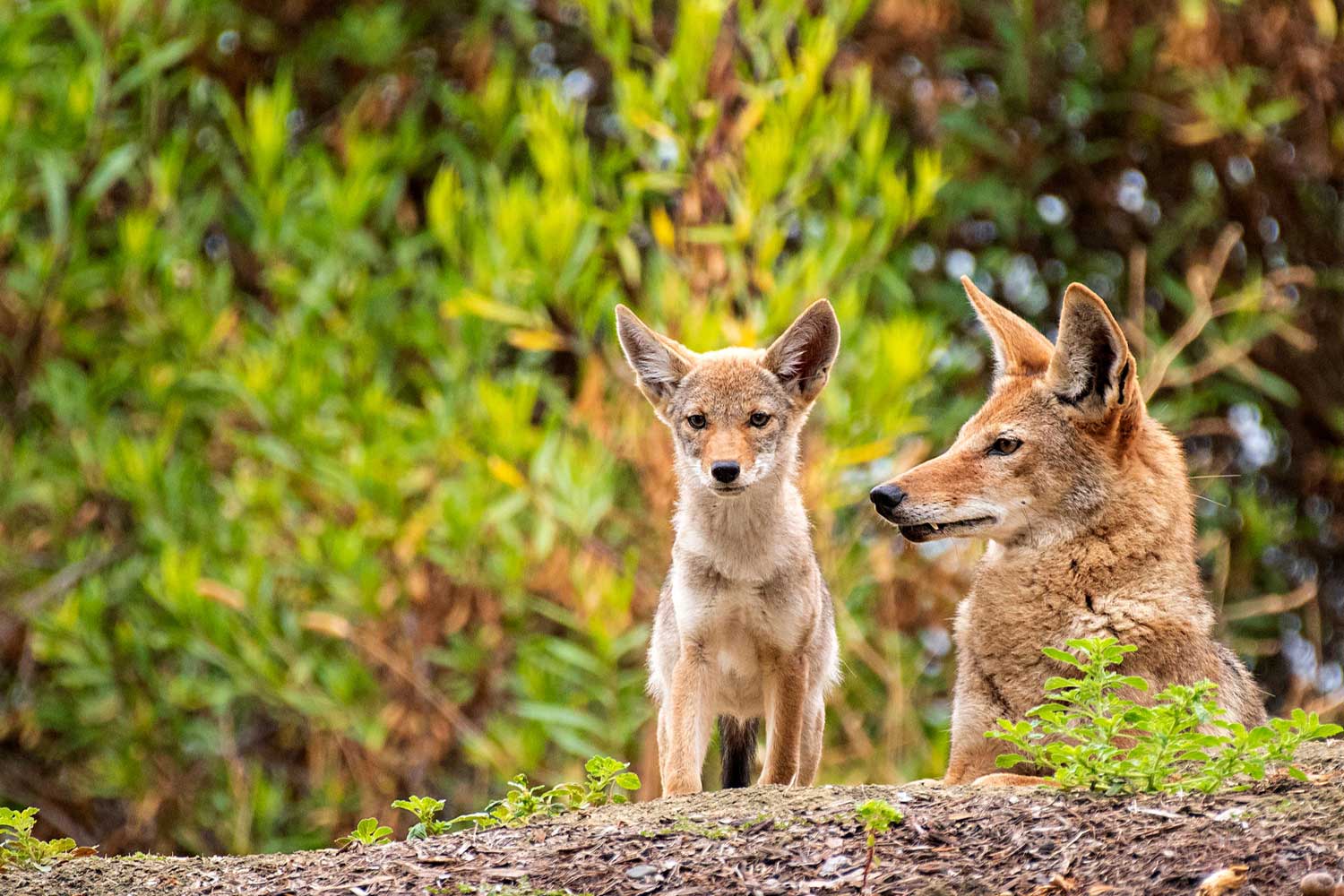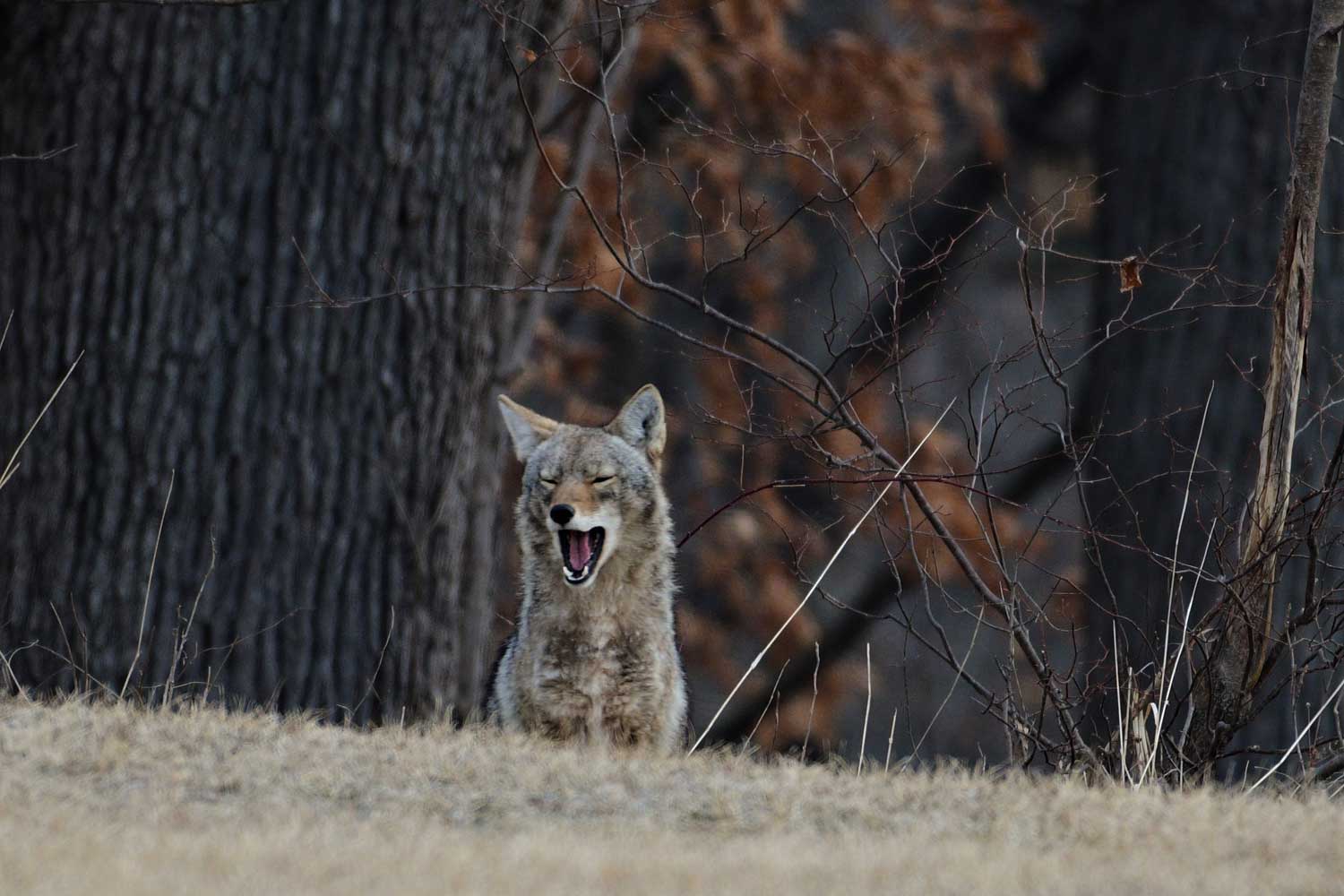How to stay safe and avoid unnecessary coyote encounters
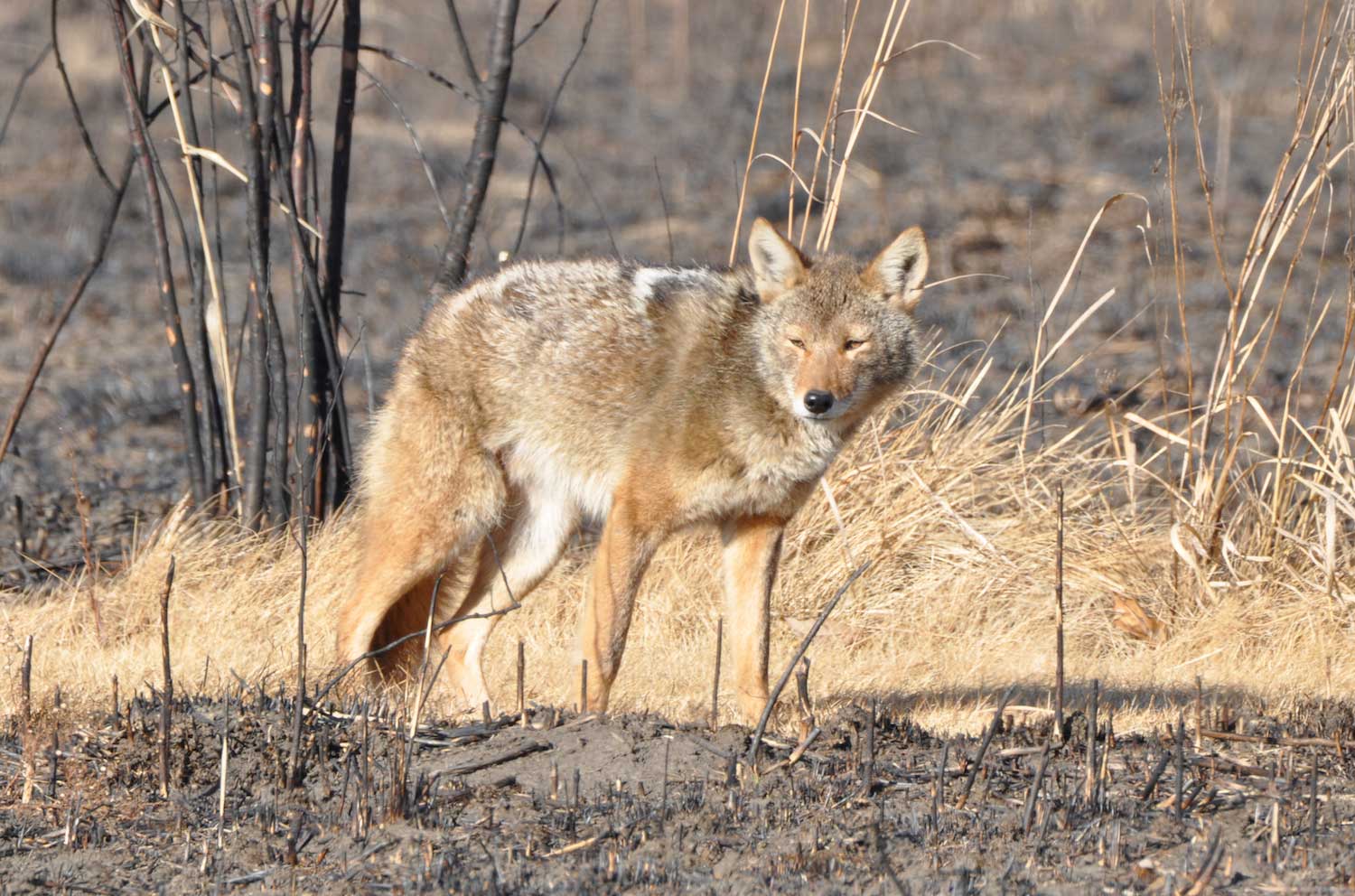
Human and pet encounters with coyotes get a lot of attention both in the media and through social media platforms, but seeing coyotes in Illinois is not unusual and in most cases is no cause for concern or alarm.
Understanding their behavior is key to avoiding unnecessary encounters with them. Coyotes live all across the state, in rural, suburban and even urban areas, according to the University of Illinois Extension's Living With Wildlife in Illinois. They play a useful role in the ecosystem because they help keep the rodent population in check. They also sometimes eat carrion, which helps keep woods and fields clear of decaying animals.
Coyotes are usually nocturnal but are sometimes active during the day, so daytime sightings should not be concerning.
These animals are related to dogs and resemble a German shepherd. Their snouts are more long and pointed than a dog's. In addition, their tails are bushier, and they hold their tails down, between their legs, when running rather than turned upward like a dog, according to the Illinois Department of Natural Resources.
While coyotes are common in Illinois today, that hasn't always been the case. They were rare at the time the state was settled by Europeans and for a long time afterward, but their population increased greatly in the 1970s and 1980s.
Today, the coyote is the largest wild predator found in Illinois, IDNR reports. Its diet mainly consists of small animals, including rabbits, deer, small rodents and birds. They also eat insects and fruit.
Scientists and researchers with the Cook County Urban Coyote Research Project have done extensive research into the diet of coyotes in urban areas. They have found that the most common food sources for coyotes in northeastern Illinois are small rodents and other mammals. Contrary to popular belief, coyotes in our area do not rely on pets and garbage as primary food sources.
While coyotes do not typically hunt our cats and dogs for food, it does happen from time to time. However, there are steps you can take to minimize your risks and keep you and your pets safe.
The No. 1 most effective thing you can do to avoid and prevent encounters with coyotes is not feed them, according to the Cook County Urban Coyote Research Project. This includes both intentionally feeding the animals and unintentionally providing them with food, including storing pet food outside and leaving garbage outside at night or in improperly secured garbage cans.
Having large bird feeders can also attract coyotes because although they don't typically eat birdseed, the presence of the feeders often attracts squirrels and other rodents. Compost should also be properly secured because coyotes sometimes eat fruit in addition to rabbits, mice and other small mammals.
If you have pets, do not leave them outdoors alone, especially at night, and do not allow them to run loose. Feral cats and outdoor domestic cats can attract coyotes to an area, so do not allow your cats to freely roam outdoors and do not leave food out for feral cats.
RELATED READING: FIVE FASCINATING FACTS ABOUT COYOTES
In the event a coyote does approach you, you should try to make yourself appear big and threatening to the animal. Stand yourself up straight and tall and yell and wave your arms in the air, the University of Illinois Extension advises.
And finally, do not create conflict with the animals where it does not exist. Coyotes are a normal part of the environment, whether you live in a rural, suburban or urban area. Give them their space and do not approach them or otherwise aggravate them, the coyote research project advises.
Coyotes that exhibit aggressive behavior toward humans should be reported to authorities immediately. The Urban Coyote Research Project suggests contacting your local animal control or police agency for guidance.
Signs of aggression in coyotes are similar to the signs dogs display: unprovoked barking, growling, or snarling; raised hackles; lunging; and following people, according to the coyote research project.
